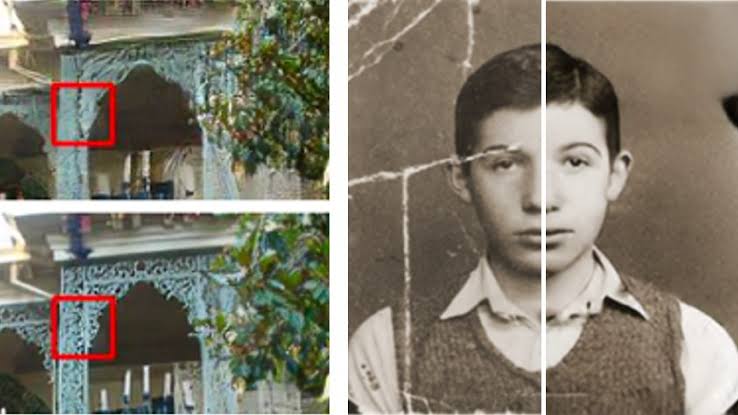In recent years artificial intelligence (AI) has revolutionized various industries Photography is no exception. The integration of AI in photography has introduced new tools and techniques. These tools enhance and manipulate images significantly. This article explores how AI-assisted photography is transforming field. It focuses on applications, benefits and potential challenges.
Artificial intelligence in photography involves use of machine learning algorithms to analyze and process images. These algorithms can learn from vast amounts of data. They improve their performance over time. By leveraging AI photographers and image editors can automate various tasks. They can streamline workflows and achieve results that were previously time-consuming or impossible with traditional methods
One primary applications of AI in photography is image enhancement. AI algorithms can automatically adjust various aspects of an image. These adjustments include brightness contrast and saturation. For example, AI-powered tools can analyze an image's composition. They suggest adjustments to improve its overall appearance. These tools can enhance details. They reduce noise and correct exposure issues with remarkable accuracy
AI algorithms use techniques such as deep learning to understand the context of an image. By recognizing patterns and features, AI can make informed adjustments that enhance image quality while preserving natural aesthetics. This capability is particularly useful for photographers who need to process large volumes of images quickly and efficiently.
Automatic Image Retouching
AI-assisted photography has also made significant strides in automatic image retouching. Traditional retouching methods often require meticulous manual work to remove blemishes, smooth skin, and correct imperfections. AI-powered retouching tools can automate these processes, delivering professional-quality results in a fraction of the time.
These tools utilize convolutional neural networks (CNNs) to identify and correct imperfections. For instance, AI can detect and remove unwanted objects from an image, smooth out wrinkles, and enhance facial features. This level of automation not only saves time but also ensures consistency across multiple images.
Advanced Image Manipulation
Beyond basic enhancements and retouching, AI enables advanced image manipulation that can transform the creative possibilities for photographers. AI-driven tools allow for complex edits such as background removal, object replacement, and style transfer. These capabilities open up new avenues for creative expression and allow photographers to experiment with various visual styles.
Background removal is a notable application where AI excels. Traditional methods of isolating subjects from backgrounds can be labor-intensive and imprecise. AI algorithms, however, can quickly and accurately segment subjects from their backgrounds, making it easier to create composites or apply different backgrounds. This functionality is particularly valuable for e-commerce photography and digital content creation.
AI-based style transfer is another exciting development in AI-assisted photography. This technique involves applying the visual style of one image to another, creating unique and artistic effects. For example, photographers can apply the brushstrokes of a famous painting to their photos or mimic the color palette of a renowned artist. Style transfer enables new creative possibilities and allows photographers to explore different artistic interpretations of their work.
Improving Workflow Efficiency
AI-assisted tools also enhance workflow efficiency by automating repetitive tasks and streamlining processes. For example, AI can assist with organizing and categorizing large collections of images. By analyzing image metadata and content, AI can automatically tag and sort images, making it easier for photographers to locate specific shots or themes.
Additionally, AI-driven image culling tools can analyze thousands of photos to identify the best shots based on criteria such as sharpness, composition, and facial expressions. This capability reduces the time spent manually reviewing and selecting images, allowing photographers to focus on the creative aspects of their work.
Challenges and Considerations
While AI-assisted photography offers numerous benefits, it also presents certain challenges and considerations. One concern is the potential loss of authenticity and the ethical implications of AI-generated or manipulated images. As AI tools become more advanced, distinguishing between genuine and artificially enhanced images can become challenging. This raises questions about the authenticity of visual content and its impact on public perception.
Another challenge is the reliance on AI algorithms, which may not always produce desired results. AI tools are only as good as the data they are trained on, and they may occasionally produce unexpected or undesirable outcomes. Photographers must remain vigilant and review AI-generated edits to ensure they meet their standards and expectations.
The Future of AI in Photography
Looking ahead, AI is likely to continue shaping the future of photography. Advancements in machine learning and computer vision will drive the development of even more sophisticated tools and techniques. For instance, AI may enable real-time image enhancement during capture, allowing photographers to see and adjust changes instantly. Additionally, AI-powered predictive analytics could provide insights into trends and preferences, helping photographers tailor their work to meet audience demands.
As AI technology evolves, it will be crucial for photographers and image editors to stay informed about emerging trends and best practices. Embracing AI-assisted photography can enhance creativity, improve efficiency, and unlock new possibilities. However, it is equally important to approach AI with a critical eye, ensuring that its use aligns with ethical standards and preserves the integrity of visual storytelling.
In conclusion, AI-assisted photography represents a significant advancement in the field, offering powerful tools for enhancing, retouching, and manipulating images. By understanding the capabilities and limitations of AI, photographers can leverage these technologies to elevate their work and explore new creative avenues. As AI continues to evolve, its role in photography will undoubtedly expand, shaping the future of visual storytelling in exciting and innovative ways.
